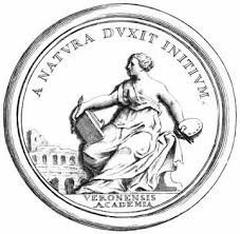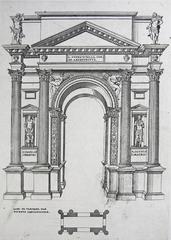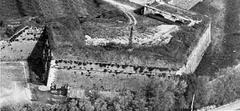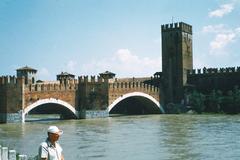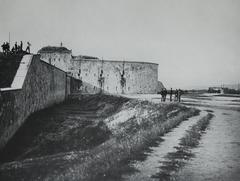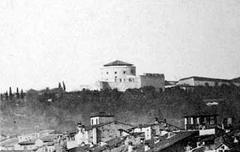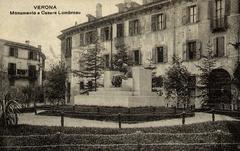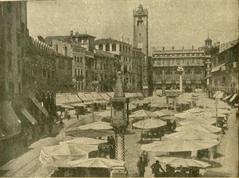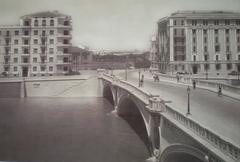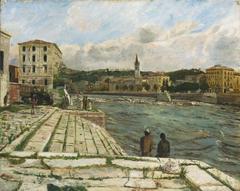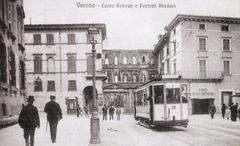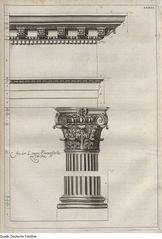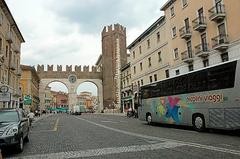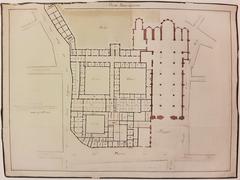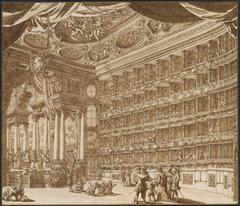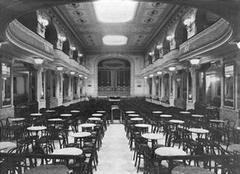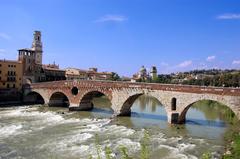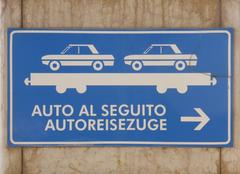
Santa Maria Antica Verona: Visiting Hours, Tickets, and Historical Sites Guide
Date: 04/07/2025
Introduction: Why Santa Maria Antica Matters
Nestled in the heart of Verona’s historic center, Santa Maria Antica is a remarkable testament to the city’s medieval religious, architectural, and civic history. Originally founded in the 7th century and rebuilt after the 1117 earthquake, this Romanesque church stands as both a spiritual landmark and a symbol of the powerful Scaligeri (della Scala) dynasty. Renowned for its austere yet elegant architecture and for hosting the famed Scaliger Tombs—some of Italy’s most iconic Gothic monuments—Santa Maria Antica offers visitors a unique journey through centuries of art, faith, and local heritage. Whether you’re an architecture enthusiast, history lover, or a curious traveler, this comprehensive guide provides all essential information, including visiting hours, ticketing, accessibility, cultural highlights, travel tips, and more. For further historical context and official visitor information, see sources such as the ItalyMammaMia guide, Spotting History, and the Verona tourism site.
Contents
- Early Foundations and Medieval Origins
- The Scaligeri Era: Power and Patronage
- Architectural Evolution and Artistic Heritage
- Religious and Civic Importance
- Visiting Hours and Tickets
- Accessibility
- Top Travel Tips and Nearby Attractions
- Key Historical Milestones
- Frequently Asked Questions (FAQ)
- Visitor Experience and Architectural Highlights
- Practical Tips for Visitors
- Summary & Travel Recommendations
- References
Early Foundations and Medieval Origins
Santa Maria Antica traces its origins to the 7th century, emerging as a modest parish church during the Lombard period. Its strategic position near today’s Piazza dei Signori placed it at the core of Verona’s civic and religious life. The church was devastated by the catastrophic earthquake of 1117 and subsequently rebuilt in the 12th century in the Romanesque style, characterized by robust stonework, rounded arches, and minimal ornamentation (ItalyMammaMia).
The Scaligeri Era: Power and Patronage
From the 13th to late 14th centuries, Santa Maria Antica became inseparable from the destiny of the della Scala (Scaligeri) family. Serving as their private chapel and burial site, the church gained significant prestige and influence. The most striking legacy of this era is the cluster of Gothic funerary monuments—the Scaliger Tombs—just outside the church. These elaborately canopied tombs, dating from the 14th and 15th centuries, commemorate rulers like Cangrande I, Mastino II, and Cansignorio della Scala, each marked by intricate stonework, sculpted effigies, and soaring pinnacles (ItalyMammaMia).
Architectural Evolution and Artistic Heritage
Romanesque and Gothic Dialogue
Rebuilt in 1185, Santa Maria Antica’s exterior features alternating bands of tuff and red brick—a hallmark of Veronese Romanesque style (Wikipedia). The church’s understated façade and small, splayed windows create a solemn atmosphere inside. The main entrance, set to the side, is crowned by the monumental arch and sarcophagus of Cangrande I, a unique architectural and dynastic statement (Visit Verona).
The bell tower, constructed from tuff and brick, is a fine example of the period’s restrained campanile design, housing three historic bells (Wikipedia). Inside, three naves are divided by red Verona marble columns and raised arches, leading toward apses adorned with early 14th-century frescoes.
Artistic Highlights
- Frescoes: Fragments from the 13th and 14th centuries survive in the apsidal area, reflecting early medieval devotional art (Zainoo).
- Mosaic Floor: A rare 7th-century black-and-white chequered mosaic, discovered in the 19th century, connects the present church to its earliest foundations (Visit Verona).
- Restoration: The late 19th-century restoration removed Baroque modifications, reinstating the Romanesque spatial clarity (Santamarianticaverona.com).
Religious and Civic Importance
Santa Maria Antica has functioned as both a parish church and a dynastic chapel, hosting ceremonies, funerals, and celebrations for the Scaligeri. Its proximity to Verona’s political heart underscores its dual spiritual and civic significance. Despite political upheavals—from the fall of the Scaligeri and Venetian rule to modern Italy—the church has maintained its role as a place of worship and a symbol of Verona’s resilience.
Visiting Hours and Tickets
- Santa Maria Antica: Generally open Tuesday to Sunday, 9:00 AM–6:00 PM (closed Mondays/major holidays). Hours may adjust for liturgical events.
- Scaliger Tombs: Open daily from 8:30 AM–7:30 PM (last entry 7:00 PM); check for seasonal changes (Verona Tourism).
Admission:
- Santa Maria Antica: Free entry (donations appreciated). Special events or concerts may require a modest ticket (Diocese of Verona).
- Scaliger Tombs: Approximately €6 for adults, with reductions for children, seniors, and residents. Tickets can be purchased onsite or online.
Combined Pass: The Verona church pass grants access to multiple historic churches for about €8—a cost-effective choice for heritage enthusiasts (ItalyMammaMia).
Accessibility
- Santa Maria Antica: Main entrance has steps; wheelchair access is limited. Contact the parish in advance for assistance.
- Scaliger Tombs: Partially accessible due to historic courtyard; assistance available upon request.
For detailed accessibility information, consult the Diocese of Verona’s official page.
Top Travel Tips and Nearby Attractions
- Combine Visits: Santa Maria Antica is adjacent to the Arche Scaligere and near Piazza delle Erbe, Torre dei Lamberti, the Verona Arena, and Juliet’s House.
- Best Time to Visit: Spring and autumn for mild weather and fewer crowds; mornings offer ideal lighting for photography.
- Dress Code: Shoulders and knees covered; hats removed inside; maintain silence during services.
- Photography: Permitted without flash or tripods, to protect artwork and respect worshippers.
- Amenities: Cafés, restaurants, and shops surround the church; public restrooms near Piazza delle Erbe.
Key Historical Milestones
- 7th Century: Foundation as a Lombard parish church
- 1117: Earthquake destruction and Romanesque reconstruction
- 13th–14th Centuries: Scaligeri family’s private chapel and burial site; construction of Scaliger Tombs
- 19th Century: Restoration revives Romanesque character
- Modern Era: Integration into Verona’s heritage tourism circuit
Frequently Asked Questions (FAQ)
Q: Are tickets required to visit Santa Maria Antica?
A: Entry is generally free; special events or guided tours may require a ticket.
Q: What are the opening hours?
A: Typically 9:00 AM–6:00 PM, closed on Mondays or for special events.
Q: Is Santa Maria Antica wheelchair accessible?
A: Accessibility is limited; contact the parish for assistance.
Q: Are guided tours available?
A: Yes, especially during cultural events or for groups—advance booking is recommended.
Q: Can I take photographs?
A: Yes, without flash or tripods.
Visitor Experience and Architectural Highlights
- Striped Masonry: Alternating bands of tuff and brick reflect the Romanesque style (Hotel Veronesi La Torre).
- Cangrande’s Arch: The side entrance under Cangrande I’s sarcophagus is both a unique architectural and historic feature (Visit Verona).
- Interior: Red marble columns, raised arches, and original frescoes offer a rare glimpse into medieval artistry (Zainoo).
- Scaliger Tombs: Gothic artistry, equestrian statues, and the stair-motif ironwork are highlights of Verona’s heritage (Spotting History).
- Mosaic Floor: Rare Lombard-era mosaic connects visitors to the church’s ancient past (Visit Verona).
Practical Tips for Visitors
- Plan Ahead: Confirm opening hours and ticket requirements before your visit.
- Respect the Space: Maintain decorum during liturgical services.
- Accessibility: Contact the parish for mobility assistance if needed.
- Combine Sites: Explore Santa Maria Antica alongside the Scaliger Tombs and other central Verona sites.
Summary & Travel Recommendations
Santa Maria Antica is a must-see for those eager to experience Verona’s medieval history, distinctive Romanesque architecture, and the dramatic legacy of the Scaligeri dynasty. The church’s central location, accessible hours, and proximity to other major attractions make it an ideal starting point for exploring the historic city center. With ongoing preservation efforts and periodic cultural events, Santa Maria Antica and the adjacent Scaliger Tombs offer an evocative and educational experience for all visitors. For the latest visitor updates, guided tour options, and travel advice, consult the official Verona tourism portal and the Diocese of Verona.
References
- ItalyMammaMia – Verona Churches Guide
- Spotting History – Scaliger Tombs
- Verona Tourism Official Site
- Wikipedia – Santa Maria Antica, Verona
- Visit Verona – Santa Maria Antica
- Zainoo – Scaliger Tombs
- Hotel Veronesi La Torre – Santa Maria Antica
- Veronissima – Santa Maria Antica
- Diocese of Verona – Santa Maria Antica
- Santamarianticaverona.com

